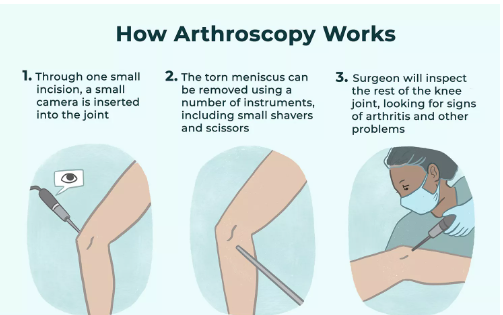Credit: CC0 Public Domain
OA is a non-inflammatory chronic joint disease, and cartilage degeneration plays a key role in the development of OA. Chondrocytes are the only cell type in cartilage that is essential for the production and maintenance of extracellular matrix. When the synthesizing capacity of chondrocytes is overwhelmed by the degrading capacity of the matrix, a homeostatic imbalance occurs within the cartilage, which contributes to the development of OA [1]. During the course of OA, chondrocytes are damaged by various factors such as mechanical factors, local inflammation,overall metabolic changes, and cell death. Previous studies have concluded that necrosis and apoptosis are the main modes of chondrocyte death in the development of OA. With the deepening of research, scholars have found that a variety of cell death modes, such as autophagic cell death, cellular pyroptosis and ferroptosis, are involved in the pathologic progression of OA [2].
Reactive oxygen species overproduction and lipid peroxidation can lead to chondrocyte injury, and iron death is characterized by iron-dependent lipid peroxide accumulation, suggesting that chondrocyte ferroptosis may be involved in the development of OA [3]. Several studies have found an imbalance in iron metabolism of chondrocytes in patients with OA. Yazar et al [4] found that the level of iron ions ( Fe3 +) in the joint fluid at the site of inflammation in patients with OA was significantly higher than in healthy subjects. Some studies have found a positive correlation between the level of Fe3+ in the joint fluid of OA patients and the severity of OA. Total iron content in the cartilage of the injured area of OA were significantly higher than those of the uninjured area, which suggests that there is an accumulation of iron at the cartilage during the progression of OA[5]. Nugzar et al [6] evaluated serum ferritin levels in patients with knee osteoarthritis (KOA) in relation to the degree of cartilage damage and they found that serum ferritin levels increased with the degree of cartilage damage, suggesting that ferritin may be involved in the progression of cartilage damage in patients with symptomatic KOA. Kennish et al [7] found a positive correlation between elevated serum ferritin levels and deterioration in imaging Kellgren-Lawrence class in patients with OA, especially in male patients. In addition, iron intake seems to be related to the development of OA. Some scholars have found that iron intake is associated with the progression of KOA in a “U” pattern, and that appropriate iron intake may help to prevent the progression of OA, whereas excessive or insufficient intake may increase the risk of OA progression [8].
Other studies have found increased levels of oxidative stress in chondrocytes in patients with OA. Miao et al [9] found that the levels of glutathione peroxidase (GPX), glutathione (GSH) and the ratio of GSH to reduced glutathione (GSSG) were reduced in cartilage of OA patients. In addition, mitochondrial morphology change was observed in chondrocytes of OA patients by transmission electron microscopy as a characteristic change of iron death, suggesting that iron death is closely related to the development of OA [10].
Reference
Jing, X., Du, T., Li, T., Yang, X., Wang, G., Liu, X., Jiang, Z., & Cui, X. (2021). The detrimental effect of iron on OA chondrocytes: Importance of pro-inflammatory cytokines induced iron influx and oxidative stress. Journal of cellular and molecular medicine, 25(12), 5671–5680.
Chen, X., Comish, P. B., Tang, D., & Kang, R. (2021). Characteristics and Biomarkers of Ferroptosis. Frontiers in cell and developmental biology, 9, 637162.
Yang, J., Hu, S., Bian, Y., Yao, J., Wang, D., Liu, X., Guo, Z., Zhang, S., & Peng, L. (2022). Targeting Cell Death: Pyroptosis, Ferroptosis, Apoptosis and Necroptosis in Osteoarthritis. Frontiers in cell and developmental biology, 9, 789948.
Yazar, M., Sarban, S., Kocyigit, A., & Isikan, U. E. (2005). Synovial fluid and plasma selenium, copper, zinc, and iron concentrations in patients with rheumatoid arthritis and osteoarthritis. Biological trace element research, 106(2), 123–132.
Burton, L. H., Radakovich, L. B., Marolf, A. J., & Santangelo, K. S. (2020). Systemic iron overload exacerbates osteoarthritis in the strain 13 guinea pig. Osteoarthritis and cartilage, 28(9), 1265–1275.
Nugzar, O., Zandman-Goddard, G., Oz, H., Lakstein, D., Feldbrin, Z., & Shargorodsky, M. (2018). The role of ferritin and adiponectin as predictors of cartilage damage assessed by arthroscopy in patients with symptomatic knee osteoarthritis. Best practice & research. Clinical rheumatology, 32(5), 662–668.
Kennish, L., Attur, M., Oh, C., Krasnokutsky, S., Samuels, J., Greenberg, J. D., Huang, X., & Abramson, S. B. (2014). Age-dependent ferritin elevations and HFE C282Y mutation as risk factors for symptomatic knee osteoarthritis in males: a longitudinal cohort study. BMC musculoskeletal disorders, 15, 8.
Wu, L., Si, H., Zeng, Y., Wu, Y., Li, M., Liu, Y., & Shen, B. (2022). Association between Iron Intake and Progression of Knee Osteoarthritis. Nutrients, 14(8), 1674.
Miao, Y., Chen, Y., Xue, F., Liu, K., Zhu, B., Gao, J., Yin, J., Zhang, C., & Li, G. (2022). Contribution of ferroptosis and GPX4's dual functions to osteoarthritis progression. EBioMedicine, 76, 103847.
Liu, X., Wang, T., Wang, W., Liang, X., Mu, Y., Xu, Y., Bai, J., & Geng, D. (2022). Emerging Potential Therapeutic Targets of Ferroptosis in Skeletal Diseases. Oxidative medicine and cellular longevity, 2022, 3112388.





Post comments